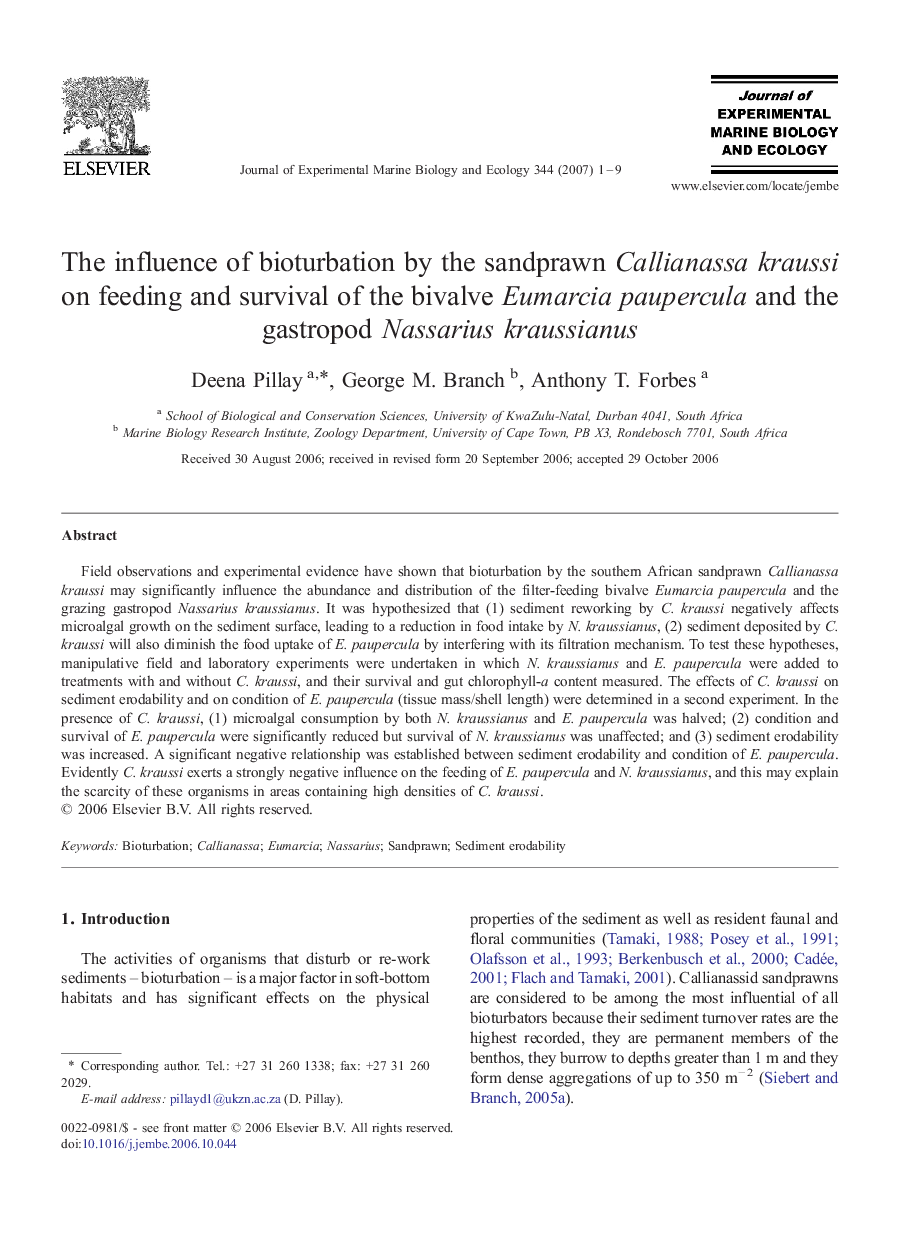| Article ID | Journal | Published Year | Pages | File Type |
|---|---|---|---|---|
| 4397686 | Journal of Experimental Marine Biology and Ecology | 2007 | 9 Pages |
Field observations and experimental evidence have shown that bioturbation by the southern African sandprawn Callianassa kraussi may significantly influence the abundance and distribution of the filter-feeding bivalve Eumarcia paupercula and the grazing gastropod Nassarius kraussianus. It was hypothesized that (1) sediment reworking by C. kraussi negatively affects microalgal growth on the sediment surface, leading to a reduction in food intake by N. kraussianus, (2) sediment deposited by C. kraussi will also diminish the food uptake of E. paupercula by interfering with its filtration mechanism. To test these hypotheses, manipulative field and laboratory experiments were undertaken in which N. kraussianus and E. paupercula were added to treatments with and without C. kraussi, and their survival and gut chlorophyll-a content measured. The effects of C. kraussi on sediment erodability and on condition of E. paupercula (tissue mass/shell length) were determined in a second experiment. In the presence of C. kraussi, (1) microalgal consumption by both N. kraussianus and E. paupercula was halved; (2) condition and survival of E. paupercula were significantly reduced but survival of N. kraussianus was unaffected; and (3) sediment erodability was increased. A significant negative relationship was established between sediment erodability and condition of E. paupercula. Evidently C. kraussi exerts a strongly negative influence on the feeding of E. paupercula and N. kraussianus, and this may explain the scarcity of these organisms in areas containing high densities of C. kraussi.
